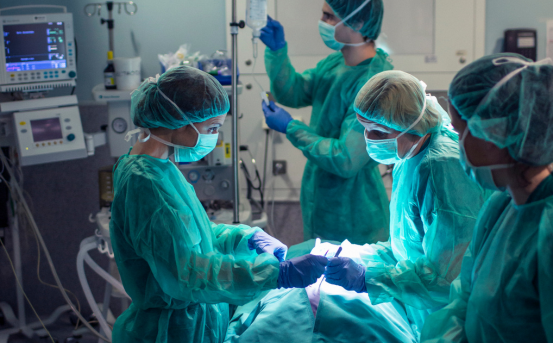Inguinal hernia repair surgery are one of the most common types of hernias, especially among men. If left untreated, they can lead to discomfort, complications, and even life-threatening conditions. Fortunately, advancements in surgical techniques have revolutionized the way hernia repair is performed, particularly for inguinal hernias. This blog explores Advanced Hernia Repair Inguinal Surgery, highlighting its types, benefits, latest techniques, and what patients can expect during recovery.
Advanced hernia repair inguinal surgery refers to the latest surgical procedures designed to correct inguinal hernias using minimally invasive techniques, high-quality surgical mesh, and sometimes robotic assistance. These modern approaches focus on reducing recovery time, minimizing post-surgery pain, lowering the risk of recurrence, and improving overall patient satisfaction. As technology continues to evolve, patients now have access to safer and more effective solutions than ever before.
What is an Inguinal Hernia?
An inguinal hernia occurs when a portion of the intestine or abdominal tissue protrudes through a weak spot in the lower abdominal wall or inguinal canal. This condition is typically characterized by a visible bulge in the groin area, pain or discomfort (especially when bending, lifting, or coughing), and a heavy or dragging sensation.
Inguinal hernias can be direct (developing with age due to weakened muscles) or indirect (usually present at birth due to a congenital defect). While some small hernias can be monitored, most cases require surgical intervention to prevent complications like strangulation or obstruction.
Why opt for Advanced Hernia Repair Surgery?
Advanced inguinal hernia repair techniques offer improved outcomes compared to traditional methods. These innovations aim to minimize recurrence, reduce postoperative pain, shorten recovery time, and lower the risk of complications.
Key benefits of choosing advanced hernia repair include :-
-
Minimally invasive approach
-
Faster recovery and return to normal activities
-
Lower risk of infection and chronic pain
-
Enhanced precision using laparoscopic or robotic-assisted technology
Types of Advanced Inguinal Hernia Repair Techniques
Several advanced techniques are used for inguinal hernia repair. The two main categories are open surgery and minimally invasive (laparoscopic or robotic) surgery.
Laparoscopic Inguinal Hernia Repair
Laparoscopic surgery involves making 2-3 small incisions in the abdomen. A camera (laparoscope) and specialized surgical instruments are inserted to repair the hernia using a mesh.
Advantages :-
-
Less postoperative pain
-
Faster healing
-
Smaller scars
-
Suitable for bilateral or recurrent hernias
Laparoscopic surgery is often done under general anesthesia and is ideal for patients seeking quicker recovery and minimal downtime.
Robotic-Assisted Hernia Repair
Robotic surgery is the most advanced form of hernia repair. It utilizes robotic arms controlled by a surgeon through a console. This provides enhanced dexterity and precision.
Benefits :-
-
3D visualization and improved control
-
Minimal blood loss
-
Reduced tissue trauma
-
Ideal for complex hernias
Robotic surgery is especially useful in cases involving recurrent or complicated hernias that are challenging to access through traditional methods.
Open Mesh Repair (Tension-Free Hernioplasty)
Though not new, open mesh repair has been improved through better mesh materials and anesthesia techniques. A single incision is made near the groin, and a synthetic mesh is placed over the defect to reinforce the abdominal wall.
Best for :-
-
Large hernias
-
Patients who are not good candidates for general anesthesia
Modern open surgeries can be performed under local anesthesia with sedation, making them safe and effective, especially for older patients.
How to Prepare for Inguinal Hernia Surgery?
Preparation plays a crucial role in the success of advanced hernia repair. Here’s what patients can expect:
Preoperative Steps :-
-
Medical evaluation :- Physical exams, imaging tests, and blood work
-
Medication review :- Discuss current medications with your surgeon
-
Fasting instructions :- Typically no food or drink 6–8 hours before surgery
-
Consent and counseling :- Your surgeon will explain the procedure and expected outcomes
Being well-prepared physically and mentally helps ease anxiety and promotes a smoother recovery.
What Happens During the Procedure?
Depending on the technique chosen (laparoscopic, robotic, or open), the surgical procedure may vary slightly. However, most surgeries follow these steps :-
-
Anesthesia administration (general or local)
-
Incision(s) are made to access the hernia site
-
Hernia sac is identified and pushed back into place
-
Reinforcement with surgical mesh
-
Incisions are closed with sutures or surgical glue
The entire procedure typically lasts between 30 minutes to 1 hour, depending on complexity.
Recovery After Advanced Inguinal Hernia Repair
One of the major advantages of advanced hernia repair surgery is the quicker recovery time.
Postoperative Recovery Timeline :-
-
First 24 hours :- Patients are monitored and may be discharged the same day.
-
First 3–5 days :- Mild soreness is expected; over-the-counter painkillers are usually sufficient.
-
1–2 weeks :- Light activities can be resumed; avoid heavy lifting.
-
2–4 weeks :- Most patients return to work (if non-physical).
-
4–6 weeks :- Full physical activity is typically allowed after surgeon clearance.
Your surgeon will provide postoperative instructions, including wound care, activity guidelines, and signs of complications to watch for.
Risks and Potential Complications
While advanced inguinal hernia surgery is generally safe, some risks include :-
-
Infection or bleeding
-
Seroma (fluid buildup)
-
Mesh-related complications
-
Nerve irritation or chronic groin pain
-
Hernia recurrence
Choosing an experienced hernia surgeon and adhering to post-surgical care greatly reduces the risk of complications.
Choosing the Right Surgeon and Hospital
When considering advanced inguinal hernia repair, it’s crucial to select :-
-
A board-certified general or laparoscopic surgeon
-
A hospital equipped with robotic or laparoscopic infrastructure
-
Surgeons with experience in hernia repair procedures
-
Positive patient testimonials and outcome history
Top-tier hospitals in metropolitan cities like Delhi, Mumbai, Bengaluru, and Chennai offer world-class hernia surgery with modern equipment and highly trained surgical teams.
Conclusion
Advanced Inguinal Hernia Repair Surgery is a safe, effective, and minimally invasive way to resolve hernias with minimal downtime and long-term relief. Whether you’re dealing with a newly diagnosed inguinal hernia or a recurring one, advanced surgical techniques like laparoscopic and robotic repair offer a faster recovery and better outcomes compared to traditional methods.






















